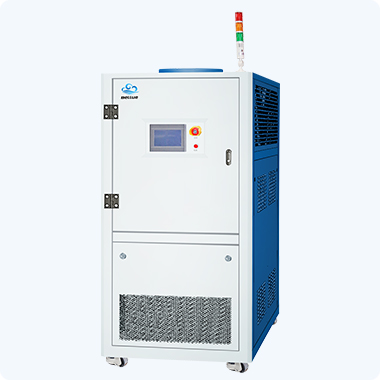Market demand analysis of energy storage battery cluster liquid cooler in 2024
With the vigorous development of the new energy industry, energy storage technology, as one of the key technologies to support the large-scale application of renewable energy, is increasingly receiving worldwide attention. Energy storage battery cluster is the core component of energy storage system, its performance and safety test is particularly important. Liquid cooling technology, with its efficient and stable heat dissipation performance, is gradually occupying a dominant position in the field of energy storage battery cluster testing. This paper will analyze the market demand for energy storage battery cluster liquid coolers in 2024, and explore the advantages of Yunhai brand in this field.
I. Overview of market demand
The rapid development of the energy storage industry: With the transformation of the global energy structure and the large-scale application of renewable energy, the energy storage industry has ushered in unprecedented development opportunities. Energy storage battery cluster as the core of energy storage system, its market demand has shown an explosive growth trend.
The wide application of liquid cooling technology: with the continuous improvement of the power density of energy storage battery clusters, the traditional air-cooled heat dissipation method has been difficult to meet the efficient and stable heat dissipation requirements. Liquid cooling technology, with its excellent heat dissipation performance and low operating costs, is gradually becoming the preferred solution for energy storage battery cluster testing.
Safety and reliability requirements: The safety and reliability of energy storage battery clusters is a key factor to ensure the stable operation of the entire energy storage system. Therefore, the demand for energy storage battery cluster liquid coolers also pays more attention to the accuracy and reliability of their test results.
2. Market demand forecast
Based on the above background, it can be predicted that the market demand for energy storage battery cluster liquid coolers will continue to maintain rapid growth in 2024. With the continuous expansion of the energy storage industry and the wide application of liquid cooling technology, the market size of energy storage battery cluster liquid coolers is expected to grow by leaps and bounds in the next few years.

Third, the advantages of Yunhai brand energy storage battery cluster liquid cooler
In the liquid cooling test machine market, Yunhai brand has won wide recognition for its excellent product performance and quality service. For the test needs of energy storage battery clusters, Yunhai brand energy storage battery clusters liquid coolers show the following significant advantages:
Excellent performance stability: Yunhai energy storage battery cluster liquid cooler adopts high-quality materials and advanced technology to ensure stable performance during long-term operation. Whether it is continuous testing or high-intensity work, it can accurately and reliably complete the test task.
Accurate temperature control: The test machine has an accurate temperature control system, which can simulate temperature changes under various extreme environmental conditions, providing a real test scenario for energy storage battery clusters. This precise control helps to accurately evaluate the performance of the battery cluster in practical applications.
Efficient heat dissipation performance: Yunhai energy storage battery cluster liquid cooler adopts advanced liquid cooling technology to ensure that the battery cluster can dissipate heat quickly during the test process to avoid the impact of overheating on the battery performance. This highly efficient thermal design helps improve test efficiency and accuracy.
Intelligent operating system: The test machine is equipped with intelligent operating system, friendly interface and convenient operation. Users can easily set test parameters, monitor test progress and obtain detailed test reports. This intelligent design greatly improves the user experience.
Comprehensive safety protection: Yunhai battery cluster liquid cooler has multiple safety protection measures, including over temperature protection, over current protection, short circuit protection, etc., to ensure the safety of the test process. This comprehensive protection design allows users to use the device with greater confidence.
Quality service support: Yunhai brand focuses on customer experience and provides a full range of service support. Whether it is equipment installation, commissioning or after-sales maintenance, there are professional teams to provide timely and professional service. This intimate service allows users to use the process without worries.
To sum up, Yunhai brand energy storage battery cluster liquid cooling testing machine with its excellent product performance and quality service, in the field of energy storage battery cluster testing has established a good reputation. With the rapid development of the energy storage industry and the wide application of liquid cooling technology, Yunhai brand is expected to continue to maintain a leading position in the future market.
Energy storage liquid cooling temperature control technology application advantages
How to derive the test results of high and low temperature coolant tester
High and low temperature coolant test electrical source circuit connection method
The problem of water source during the use of high and low temperature coolant testing machine
Coolant filling and discharging method of battery module high and low temperature liquid cooling test machine
High and low temperature liquid cooling test machine solutions
